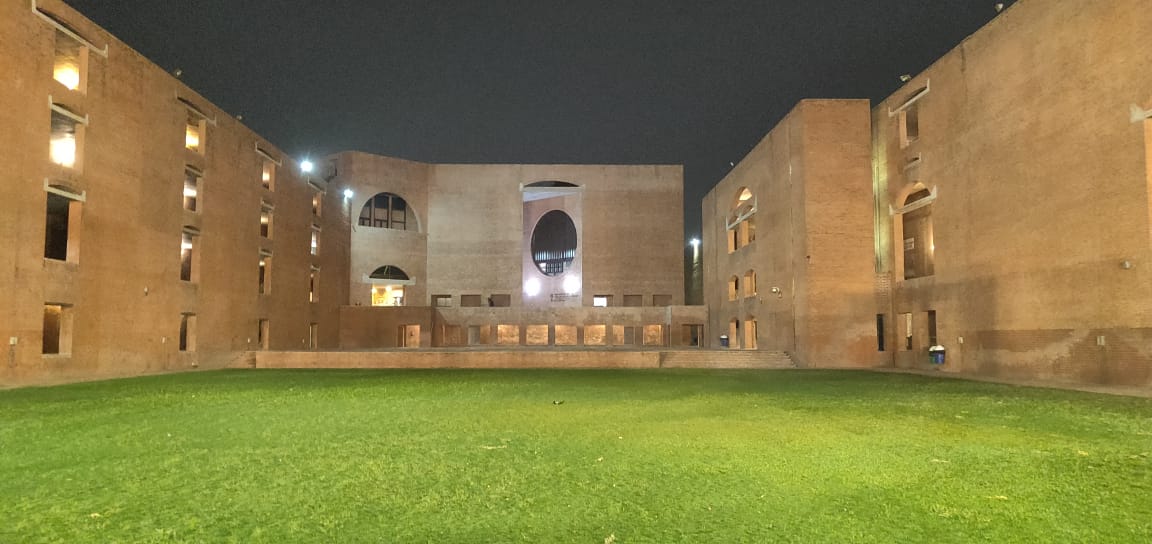
Nestled at the banks of the Sabarmati, the
former capital city of Gujarat is identified as the largest in the state with a
population of over 5.8 million. This dry, semi arid city is known for another
fact- its obsession with architecture.
Positioned at the western boundary of the
country, the region has always been welcoming new cultures that travelled and
reached India through the northern mountains and valleys. Being exposed to
these different civilizations and their ways, led to the mixing of various
cultural forms, art and architecture resulting in the unique blend it is today.
SUN TEMPLE AND SOLANKI
ARCHITECTURE
The Chaulukya or Solanki dynasty which ruled
Gujarat from around 900 AD to 1200 AD guided the region towards the creation of
a distinct style through the construction of several temples, palaces,
buildings and renowned stepwells, eventually sculpturing the architectural
language that evolved out of them. The Sun Temple in Modhera is a fine example
of Solanki architecture.
 Figure 1: Step wells, source: Lets Buildit
Figure 1: Step wells, source: Lets Buildit
AFGHAN INVASIONS
Afghan invasions in the early centuries of the
second millennia that followed this period almost wiped off traces of the era,
yet retaining some structures till date. The Mughal rule that spread later saw a mixing of styles and cultures with
elements being borrowed from the earlier Hindu architecture and being mixed
with their own. Ahmed Shah, a ruler of
the Muzaffarid dynasty, who founded the Ahmedabad city, encouraged the fusing
of Hindu and Persian craftsmanship giving rise to the Indo-Saracenic style.
The 13th century witnessed the construction of several iconic structures that would stand through the tests of times. The Teen Darwaza and SarkhejRoza both articulated as faces of Islamic architecture in the city were constructed during this period. The ‘SidiSaiyyedniJali’ in the SidiSaiyyed Mosque constructed in 1572-73 AD become the identity mark of this city.
WHEN THE BRITISH CAME…
Although the British rule didn’t bring up much
architectural substance to overshadow the already existing legacy of Ahmedabad,
a number of colonial structures like the Maneklal Jethabhai Library, The Art
Deco Hotel hold out to exhibit the
prowess of the era.
Coming to the 20th century, the city
attracted several architecture enthusiasts, including many renowned architects,
who would leave their marks in the rich architectural fabric of this city.
Louis Kahn who designed the IIM Ahmedabad campus, Frank Lloyd Wright with his
calico mills and calico dome design and Le Corbusier with the mill owners association
building design left traces for the city and its people to be proud about.
Apart from them, Ahmedabad boasts about its own architectural maestro, B V
Doshi.
NOW WHAT ?
Today Ahmedabad city is blessed with a large
number of practicing architects. “Attachment of the people with art and their
culture . . .along with their interest to get things done by professionals,
even since a long time ago, contributed to the present scenario of architecture
in the city”, says Shilpa, a young practicing architect. In 2017, Ahmedabad
became the first city in India to be declared as a UNESCO world heritage city
and rightfully so. This would encourage people to have a sense of
responsibility to safeguard the assets of this beautiful city. Although the
growing population and vehicle count are pushing the city towards a highly
polluted one, as long as the people have a feeling of ownership and identity
with the structures and the city, hope pertains for securing the history left
behind by great craftsmen in Ahmedabad.
Article By,
Melva Joseph
Buildit Correspondent, Ahmedabad
copyrights © 2019 Buildit. All rights reserved.
Powered by Drabito Technologies
Comments
No comment available